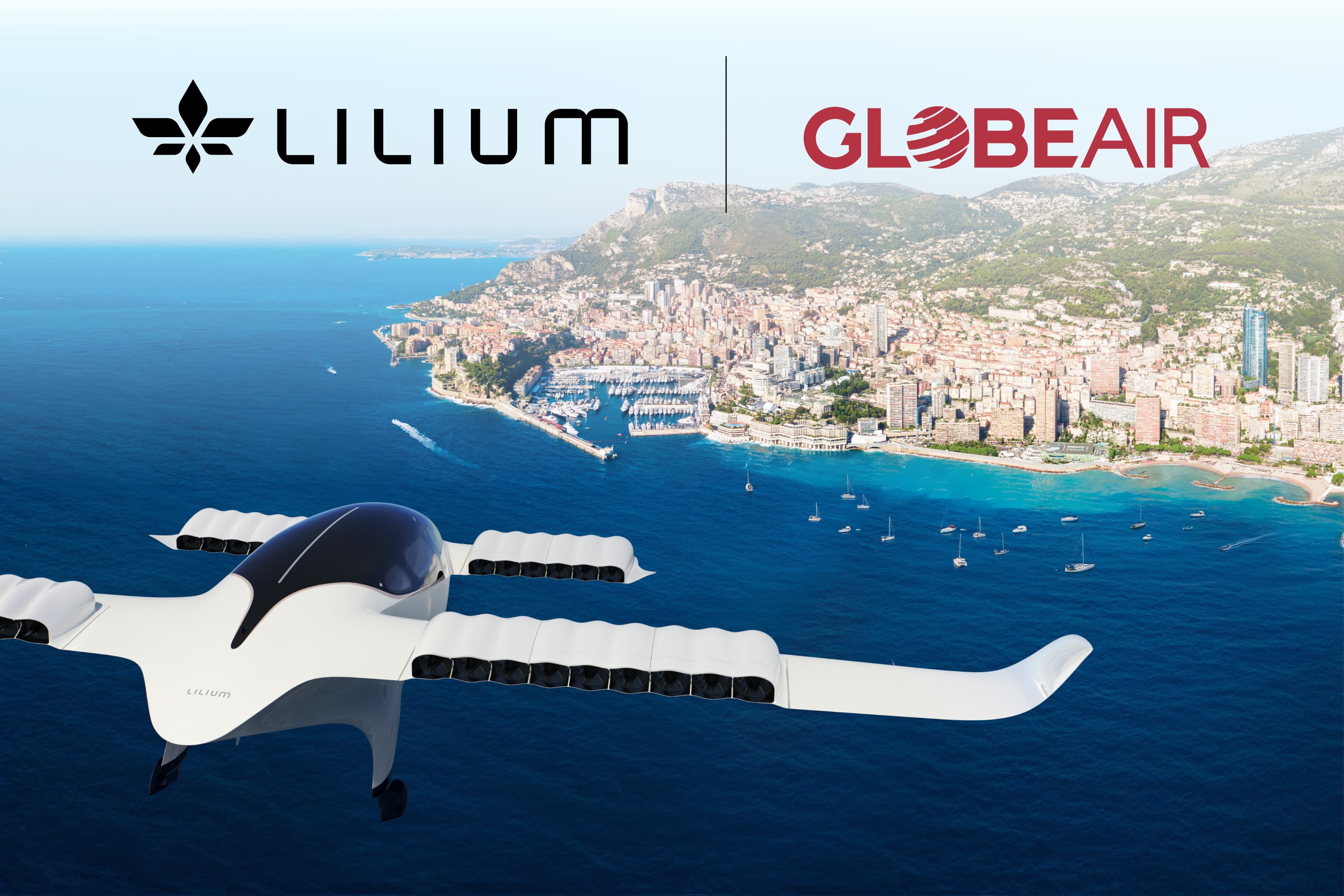Unbeknownst to me, there's already a company called Lilium selling all-electric vertical take-off and landing (eVTOL) jets, and is already selling them commercialy. They just announced sale of 12 jets to GlobeAir to provide flights in the French Riviera and Italy.
"The proprietary technology at the core of the Lilium Jet is Ducted Electric Vectored Thrust (DEVT) which we have refined through successive generations of aircraft demonstrators. Electric jet engines integrated into the wing flaps provide advantages in payload, aerodynamic efficiency and a lower noise profile, whilst also providing thrust vector control to manoeuvre the Lilium Jet through every phase of flight."
"Traditional jet engines power 95% of commercial aircraft and we have based our design on the same principles, yet far simpler. Our electric jet engines rely on just a single 'stage' rotor/stator system driven by an electric motor with zero emissions."
"The Lilium Jet can adapt for a range of customers and uses, with each configuration optimized for an unparalleled experience. The most spacious cabin arrangement is designed for private flights, with luxurious club seating. Alternatively, the cabin can be configured with 6 seats for passenger flights, or without seats to serve the zero-emissions logistics market."
"Lilium is one of the only pioneers in eVTOL seeking dual certification with EASA and FAA. Since 2015, we've designed, built and tested 5 generations of technology demonstrators and invited the world to watch as we pioneer an aircraft and flight control system never seen before."
"The Lilium aircraft requirements can be summarised as follows: Zero operating emissions, highly efficient cruise phase, vertical take-off & landing for inner city accessibility, low noise for high frequency inner city flight operations and customer acceptance, high seat capacity to achieve attractive unit economics and affordable pricing over time, and scalability whilst maintaining ground footprint and low noise."
"The main wing-span is limited to <14 meters to enable the use of existing helipads (approximately 14,000 possible locations in the US alone). Simple by design, there are no ailerons and there is no need for a vertical stabiliser. The landing gear is fixed and there are no hydraulics. Directional stability is provided by active electronic differential thrust control. The aircraft is controlled through a fly-by-wire avionics system. The main wings generate ~60% of the lift, the canards ~20%, and the remaining ~20% is generated across the fuselage. The canards and wings are positioned as far apart as practicable, to enable the aircraft to be stable in pitch."
"The propulsion system consists of 36 individually controllable flaps, which also serve as lifting and control surfaces and each flap contains a ducted electric fan. The 36 ducted fans are embedded in a 1:2 ratio on the canard to main wing. Embedding the ducted fans into the wings eliminates the need for dedicated nacelles, reducing weight and minimising aerodynamic drag loss. The flap is rotated by an integrated servo unit, which can rotate the whole flap unit for controllability during hover and cruise flight. The flaps only receive two signals, fan speed and flap angle, by which the aircraft can be controlled throughout the flight envelope via thrust vectoring."
"The fan stage is designed to be most efficient during hover flight. In order to achieve approximately the same aerodynamic stage efficiencies during cruise flight, we make use of a variable nozzle."
The website has much more information about the aircraft.
